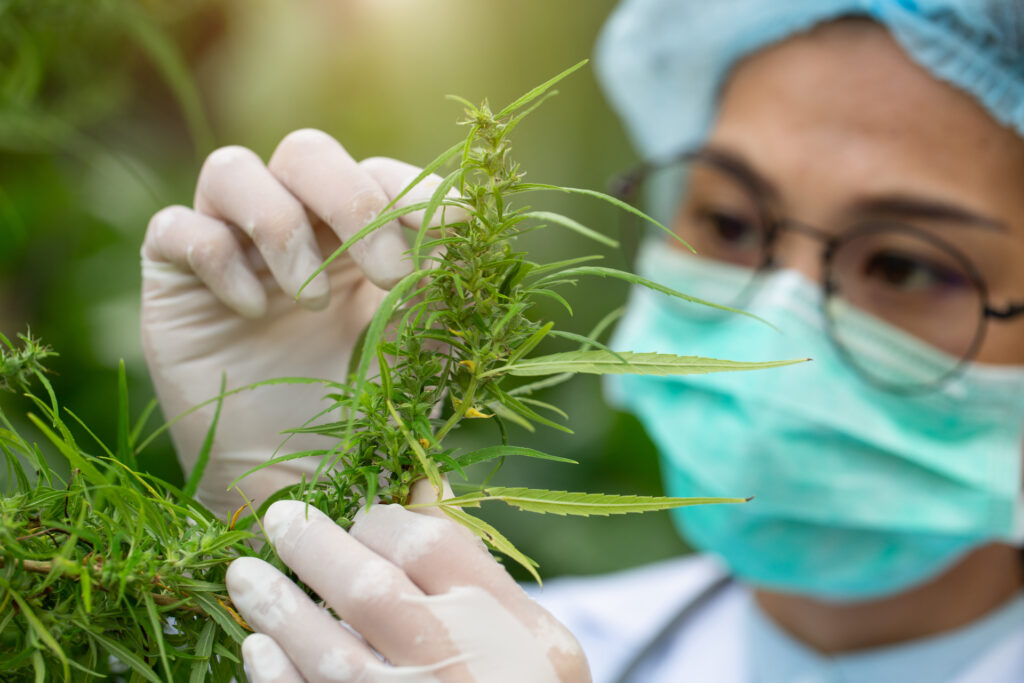
Study surveys 80,000 cannabis users when, how and why they use the plant
Through an app called Jointly, the researchers examined information from more than 200,000 cannabis user experiences to better understand what consumers want. Here’s what the data showed.
The report aims to demystify “purposeful and intentional” cannabis use across America. The data points total 206,000 sessions. The data from these experience logs was used as the basis for the report,” the authors said.
“This report highlights clear consumption trends that product manufacturers and retailers can leverage to capitalize on the US legal cannabis market, which is expected to exceed $57 billion by 2030.”
New Frontier Data, “Cannabis Users in America, Part 2: The Purposeful User.”
For approximately 140,000 recorded sessions, time of day, time elapsed since last consumption, physical activity, sleep duration, hydration level, hunger level, and side effects were noted. Another 120,000 contained information about the type of exercise, the quality of the diet, the type of food eaten during the session, the environment and the presence of attendants. This data has been incorporated into the full report, which can be requested for download here.
Part 1 of Jointly’s report, released in 2021, found that 2 in 5 consumers reported increasing their cannabis use during the COVID-19 pandemic. According to reports, Jointly will release a third edition of the report, which will cover archetypes that categorize consumer intentions, demographics, and desires. Here’s what the data from Jointly’s latest consumer report reveals.
Flower still reigns supreme

“Flower is the most commonly used product type, used in 60% of consumption sessions reported by determined consumers,” the Jointly report found. “Vapes (24%) and dabs (8%) are the second and third most used products, respectively,” according to the data. “Together, these three inhalable forms account for 92% of reported use sessions.”
Flower is the most used form for those who want to achieve specific consumption goals. But it’s not the top rated for getting the desired results. The study suggests that it’s possible that “Blume is more popular overall, those looking for specific outcomes who prefer standardization and sophistication of manufactured products.”
Drinks had the best rating
When it comes to processed cannabis products, according to the report, beverages were “rated very highly for helping consumers achieve their goals.” “This may be related to ease of dosing (e.g., most beverages contain one serving), their easy substitution for alcohol, or technologies (like nanoemulsion) that shorten the time of onset,” the authors suggested.
Baby boomers love edibles and tinctures

The report found that “edibles and tinctures are more commonly used by older consumers than younger consumers.” The data showed that the 58-76 age group accounts for about 12% of the edibles market and 3% of the tincture market. That’s more than all the under-41s combined. The report adds that “for most destinations, ingestible products (e.g. edibles, beverages and tinctures) tend to result in higher destination scores than inhalation products (e.g. flower, vapes or dabs)”.
People like to smoke alone at home
Of the sessions recorded, 50% were solo and 79% at home. The authors added that shared social use “included companions ranging from significant others (22%) to friends (15%) to family (10%).”

Enjoying social experiences with friends and enhancing intimacy with a significant other were the only goals not pursued primarily on a solo basis.
The authors suggest that users may be looking for sleep at home or lack acceptable places for outdoor consumption. The report also found that “consumption in nature, although uncommon, led to the best outcomes for six of the nine targets.”
Most people use weed for stress relief

According to the report, “Relaxation and relieving everyday stress are the most common goals” recorded by users of the app. Substituting other substances such as alcohol, caffeine or opioids was the least common. But interestingly, those who hoped to substitute other substances had the highest success rate on all targets recorded.
The authors said, “This may be because the act (the use of cannabis) itself defines success, regardless of the outcome.” The results show that beverages were most commonly chosen by people with the goal of replacing another substance . But “concentrates were rated the most effective at meeting this goal, despite being among the least effective for all other goals,” according to the data.
Cannabis doesn’t magically solve every problem

Ultimately, the report found that consumer experiences are equally dependent on the product chosen, the dosage, and the environment in which they consume. The authors also concluded that there is much more to cannabis use than just THC, as “product quality and formulation are important aspects of any experience.”
Some user goals were more influenced by non-cannabis factors such as diet and exercise, while others appeared to be directly dependent on cannabis use itself. For example, relaxation and pain relief were more associated with cannabis use, while enhanced intimacy was more associated with non-cannabis factors. This shows that for some goals the plant itself can be the main driver of success, but only to a limited extent for others.
According to a separate study by San Francisco-based delivery platform Eaze, many adults use cannabis like coffee or pre-workout supplements, not alcohol. The results showed an increased relationship between cannabis use and activities such as work, fitness and intimacy, Adweek reported.
“It may sound counterintuitive, but cannabis for responsible adults exists… We are seeing the integration of cannabis into areas of life where we have not seen it before. It’s not about waking up and hitting a bong,” Ashford told Adweek. “Some people take an edible 2-milligram sativa like someone else is drinking espresso in the morning.”
Elizabeth Ashford, Eaz
About the authors of the report

Jointly is data-driven sales software that helps retailers connect with their customers.
According to its use report, “Jointly was founded on the premise that purposeful cannabis use is the key to a better you. Cannabis enthusiasts use the platform to find products and reflect on their experiences to gain insights that help them achieve their goals. They learn to create the conditions for their ideal experience by tracking the factors that may impact their outcomes while also being aware of potential side effects.”
“Stigma teaches us that cannabis is all about getting high,” said David Kooi, CEO and co-founder of Jointly. “But their use is purposeful and related to the achievement of specific goals. This is a survey of determined consumers.”
*Editor’s Note: Data in Jointly’s report was self-selected and self-reported. They should not be interpreted as survey data.
By submitting this form, you are subscribing to Leafly news and promotional emails and agreeing to Leafly’s Terms of Service and Privacy Policy. You can unsubscribe from Leafly email communications at any time.

Post a comment: